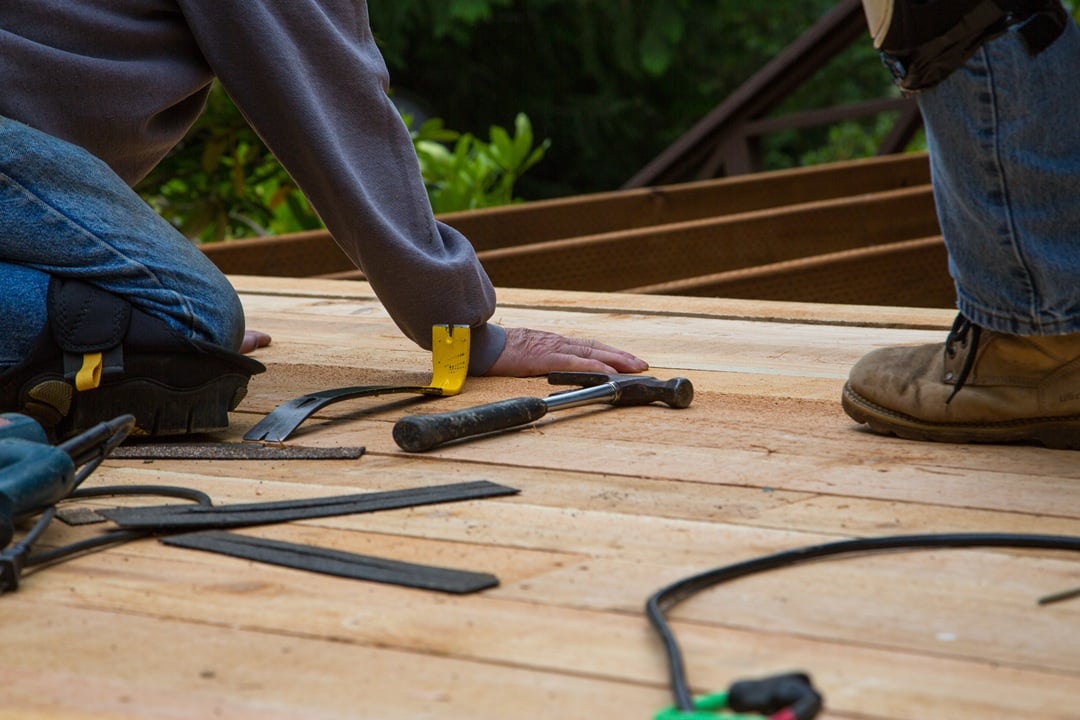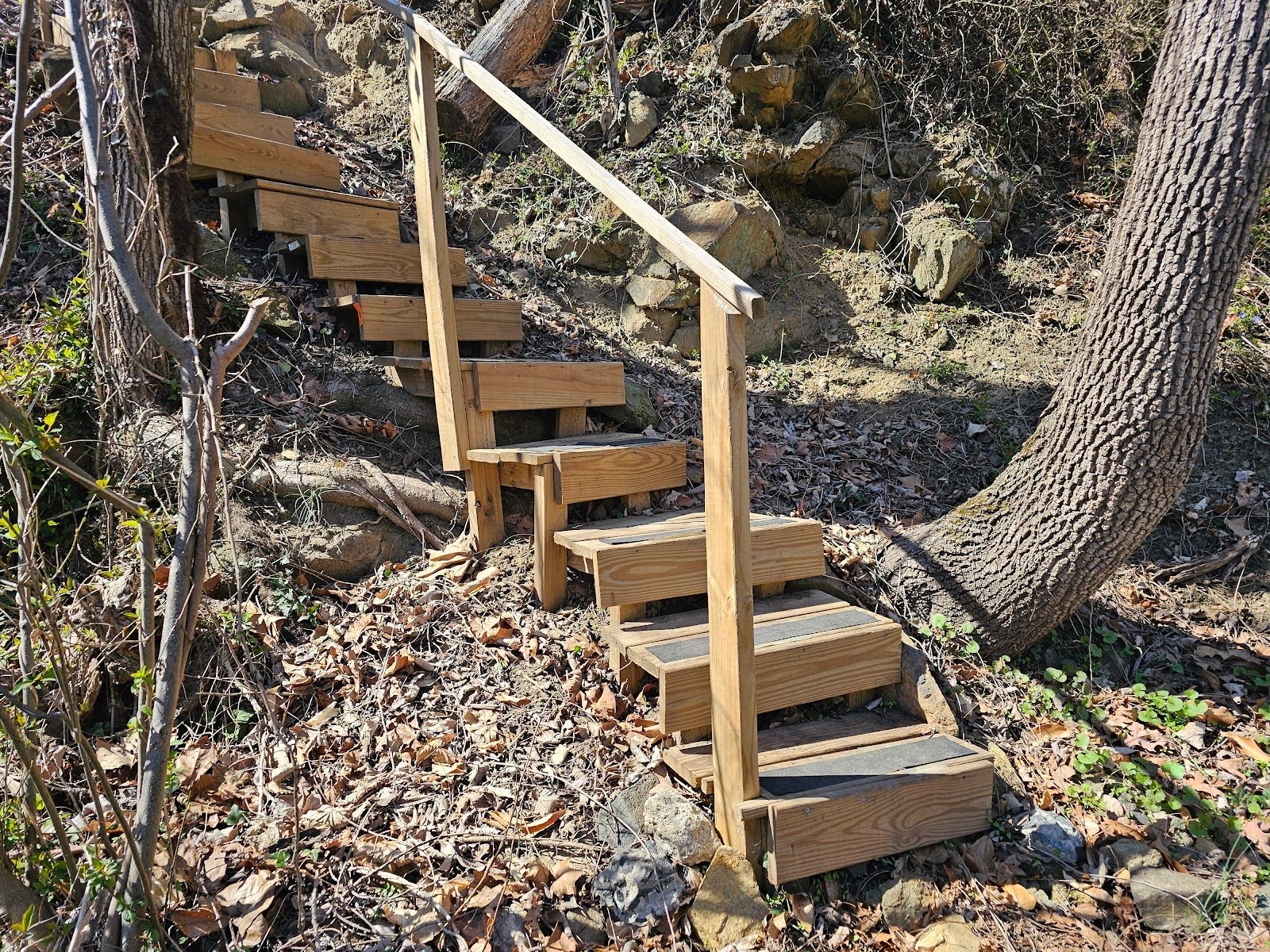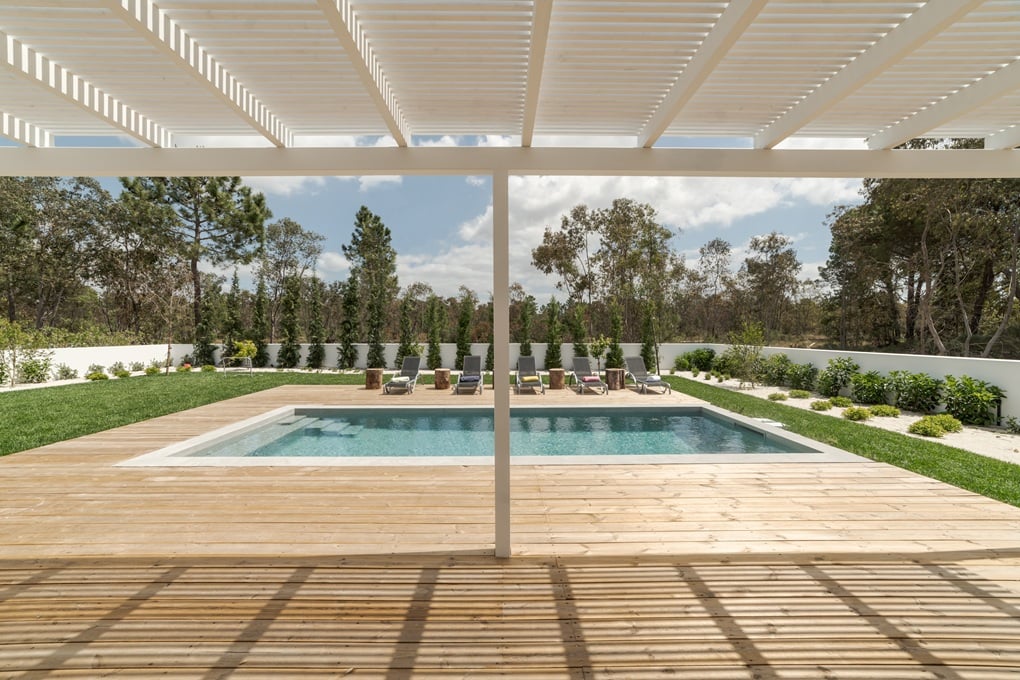Dimensional Lumber for Artistic Deck Guardrail Design
Here, in our blog and on our website, we have looked at many different styles and layouts and configurations of decks. Many of these decks are built in backyards as a seating or walking surface. In some cases, decks can be built multiple levels in height and with complex stairways to access the deck both from the ground or access in ingress or egress from the deck or building through the deck and an association stairway. Today we’re looking at a backyard deck that’s relatively simple. It gives a slightly elevated platform above the ground itself and maybe a better surface for seating and gathering than the yard itself.

There are a few interesting details about this deck that make it look a little bit better than the most basic and standard forms. It’s not actually complex or complicated, and sometimes the smaller details can accentuate unique elements in a design. Instead of being built in a simple rectilinear, either square or rectangular form, this deck has a dog-ear or angled cut at the outside corner. The opposite corner terminates or ends in a stairway that is relatively short but goes from the ground to the deck surface.
The opposite corner on the outer side ends in a combination of two 45° angles which are connected with an extension of the rim joist and an extra guardrail post. The guardrail itself follows that 45° angle instead of a typical 90° angle. This essentially involves a little bit of extra work. It might save a slight bit of materials, but in reality, it actually probably just creates a little bit of extra waste. In total, this extra detail probably has a net increase in cost of both materials and labor, but it adds a unique detail because instead of a boring and typical 90° detail it’s a more eased edge.

In the picture below, you can see the guardrail has vertical pickets that are pretty typical in common at many decks, but at the corner and the adjacent panel to the right, as shown in the picture above, there is an angled pattern where the pickets are supported to one another in the middle.
They don’t all run the full span from framing member to framing member. This more unique configuration provides a little bit of aesthetic interest in detail. It might be slightly weaker though because connections between 2×2 materials to other 2×2 materials do not have as strong of an area in the wood for a fastener to bite. 2x or 4x materials provide a lot more wood available for a fastener to thread or run into. That extra amount of wood allows for both longer fasteners and a more solid connection.
A zoomed in, much closer view of that connection is shown below. The one benefit to this type of connection is that there are more points of connection between the boards. Still though they come they do not have the same level or amount of strength or resistance from a lateral force. In general, pickets are somewhat protected from compressive forces because the framing above and below essentially wraps them in an area where they don’t have to withstand a compressive force from above.
The lateral force is different though because a child or even adult could intentionally or accidentally push against the pickets. Here these pickets lack the same level of resistance that you would find in other pickets installed in a more traditional configuration.

The picture below shows what looks to be a relatively simple and typical type of view of this deck. You can see the way that the row home yards lay out with a fence between them and you can see the neighbor’s deck that extends farther out into the yard than this particular property’s deck. All of this looks pretty normal, but if you have a very discerning eye, you may notice what appears to be a possible defect in the structural load path or support framing of this deck.

When you look very closely in the picture below, you may notice that there is a joint in the rim joist that is near, but not on top of the structural girder below. You can see this both in the picture above and in the picture below. The picture below just shows it a little bit more closely. It’s a little bit dark and shadowy underneath the deck because it’s out of the sunlight, shaded by the deck above.
When you look closely, though, you can almost see that it looks like the rim joist to the left is not actually placed on top of the girder. That means that the rim joist on the side and that portion of the angled rim joist are not supported with a girder below.
That also means that there’s probably more than just the outer rim joist that is unsupported. It looks like there’s an additional joist that attaches to that angle joist like a header that is connected but unsupported below. You can also see that the joint where the ends of these joists mate or meet each other has a misalignment. The joist to the left is slightly lower, maybe a half inch lower at the bottom edge.
This may be from differential settlement as the deck has slightly shifted over time, further downward at the edge and side to the left. This is one of the reasons we always recommend using a very professional contractor such as ourselves who cares about building with quality, both from a perspective of aesthetics, but also from a perspective of structural integrity.

Use a contractor who understands and cares about doing things right. Always, feel free to reach out to us here at Dupont Decks and Patios. We are happy to help with almost all steps of the deck building and design process. A backyard and outdoor space should make a significant, positive impact on both quality of life and home value. We can help with more than just decks, we also build patios, pergolas, ramadas, awnings, gazebos, arbors, and privacy fences.
Let us know about your ideas and talk to us if you have questions about possibilities. We are happy to participate in improving your outdoor space and quality of life! You can call us at (202) 774-9128. You can find us online at https://dupontdeckspatiosdc.com and you can email us there as well at https://dupontdeckspatiosdc.com/contact-us




